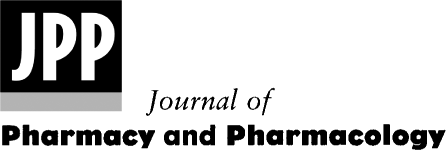redgaragebooks.chez-alice.fr
1. Shore Leave The sun was melting the tarmac on the pavement orsidewalk. The taxis growled through the traffic like parcheddogs. The omnipresent police cars were emblazoned withthe NYPD motto, “courtesy, professionalism, respect”, butinside them the officers looked sweaty and dangerous. The upshot was that Richie suddenly loved shopping. “Hey, 25% off all shoes. Let’s have a look,”
 Preparation, physicochemical characterization and biological
Received August 26, 2008Accepted March 18, 2009
evaluation of cefodizime metal ion complexes
Sayed H. Audaa,b, Y. Mrestanic, Dietrich H. Niesd, Cornelia Großed
Institutes of aPharmacy, cApplied Dermatopharmacy and dBiology, Martin-Luther-University Halle-Wittenberg,Halle (Saale), Germany, and bDepartment of Pharmaceutics and Industrial Pharmacy, Faculty of Pharmacy,Al-Azhar University, Assiut Branch, Assiut, Egypt
Objectives Cefodizime is a broad spectrum cephalosporin belonging to the thirdgeneration agents. In this study, attention has been paid to the preparation, physicochemicalcharacterization and biological evaluation of new Cu2+, Zn2+, Fe3+, Co2+ and Al3+complexes of cefodizime.
Preparation, physicochemical characterization and biological
Received August 26, 2008Accepted March 18, 2009
evaluation of cefodizime metal ion complexes
Sayed H. Audaa,b, Y. Mrestanic, Dietrich H. Niesd, Cornelia Großed
Institutes of aPharmacy, cApplied Dermatopharmacy and dBiology, Martin-Luther-University Halle-Wittenberg,Halle (Saale), Germany, and bDepartment of Pharmaceutics and Industrial Pharmacy, Faculty of Pharmacy,Al-Azhar University, Assiut Branch, Assiut, Egypt
Objectives Cefodizime is a broad spectrum cephalosporin belonging to the thirdgeneration agents. In this study, attention has been paid to the preparation, physicochemicalcharacterization and biological evaluation of new Cu2+, Zn2+, Fe3+, Co2+ and Al3+complexes of cefodizime.